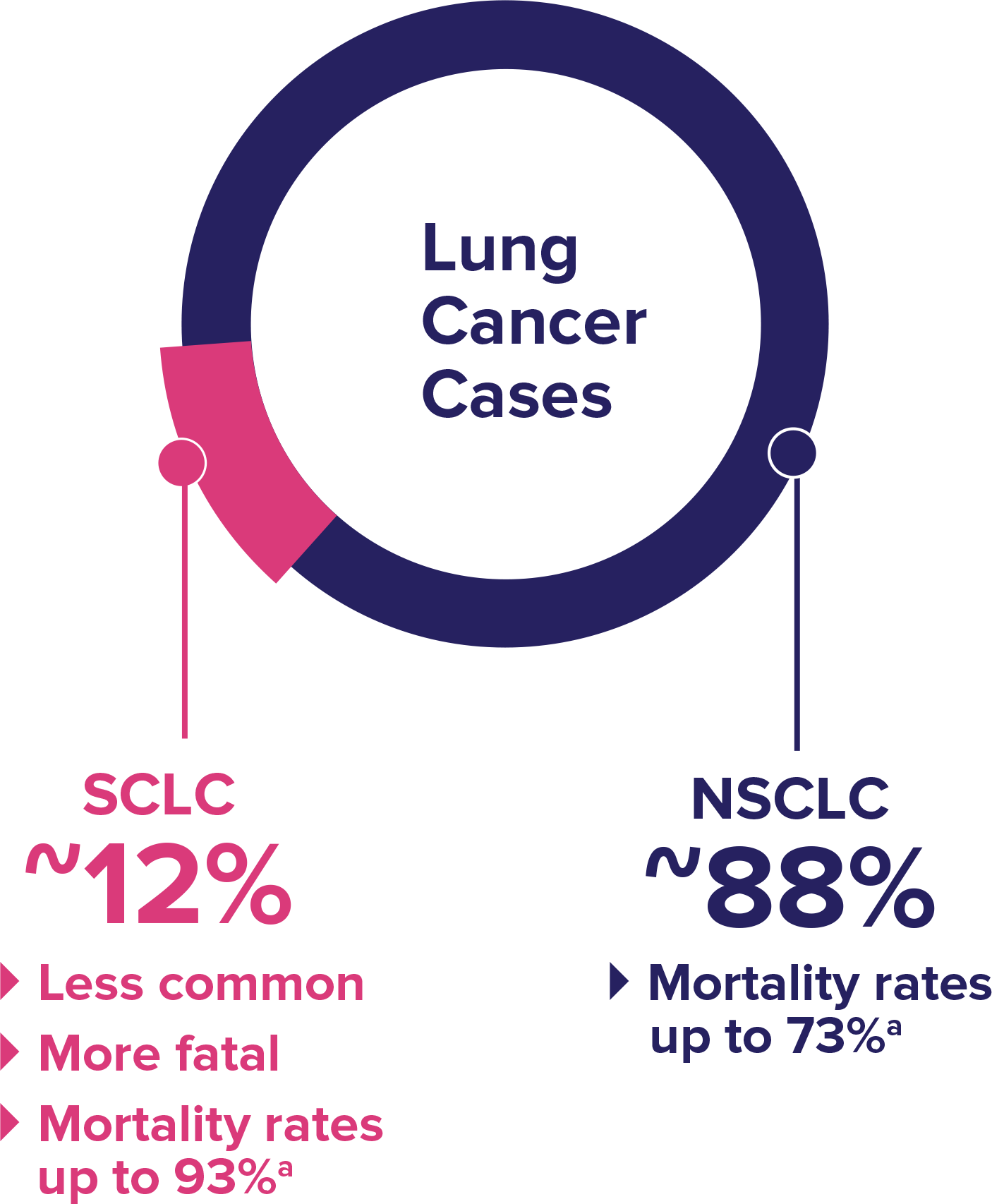Poor performance status (3-4)8
Extensive-stage disease8
Weight loss8
Markers associated with excessive bulk of disease (lactate dehydrogenase)8,15
The 2 main classifications of lung cancer are non-small cell lung cancer (NSCLC) and small cell lung cancer (SCLC).1 They differ in many ways. Compared with NSCLC, SCLC has a poorer short-term prognosis and significantly lower overall survival (OS) rates.2-4
Unlike NSCLC, which has established biomarkers and may be identified by biopsy, SCLC is harder to diagnose. Not only does SCLC lack established biomarkers, a lack of adequate tissue samples from diagnostic biopsies makes it difficult for molecular profiling.4,5
Primary Classifications and Proportion of Lung Cancer Cases2,9-11

aIn patients diagnosed between 2010 and 2016.
US Trends in SCLC8,9,12,13
in 2025

Recent trends suggest gender
ratio has been equalizing

Nearly all cases
of SCLC are attributable
to cigarette smoking
Factors Associated With SCLC Prognosis
Poor performance status (3-4)8
Extensive-stage disease8
Weight loss8
Markers associated with excessive bulk of disease (lactate dehydrogenase)8,15
Female gender8,15
Age <70 years8
Normal lactate dehydrogenase8
Stage I disease8
Smoking cessation16
Younger age8
Good performance status (0-1)8,15
Normal creatinine level8
Normal lactate dehydrogenase8,15
Single metastatic site8
Smoking cessation16
Given the low rates of survival associated with SCLC, you may want to consider specific patient characteristics and prognostic factors when developing a treatment plan.
NCCN=National Comprehensive Cancer Network® (NCCN®).